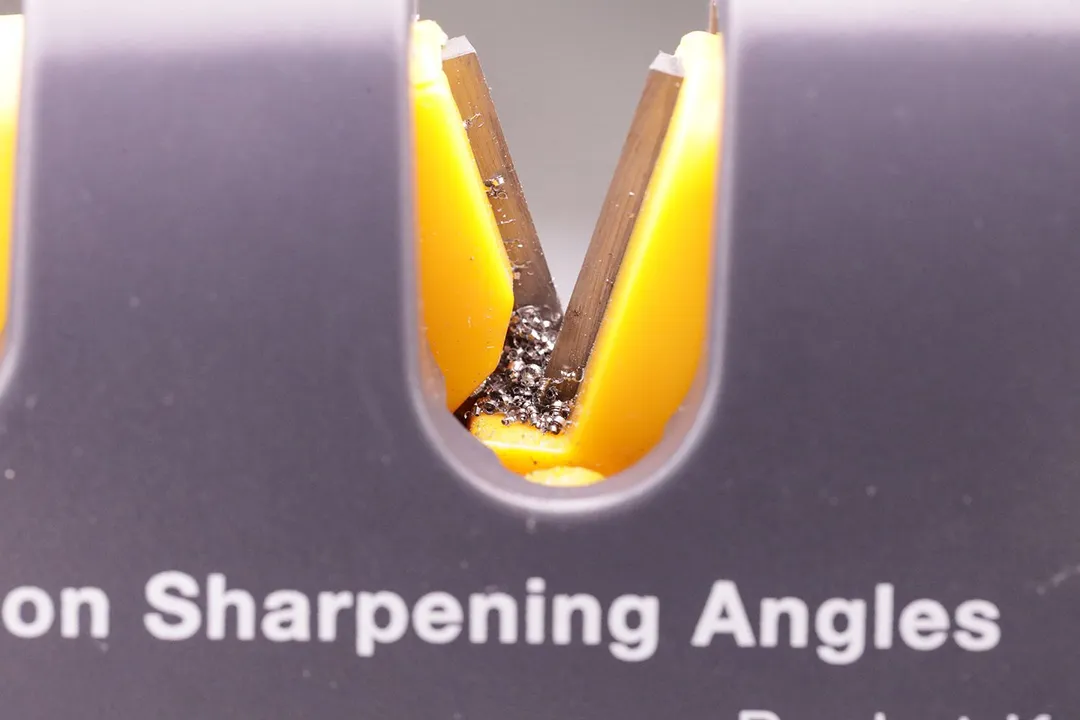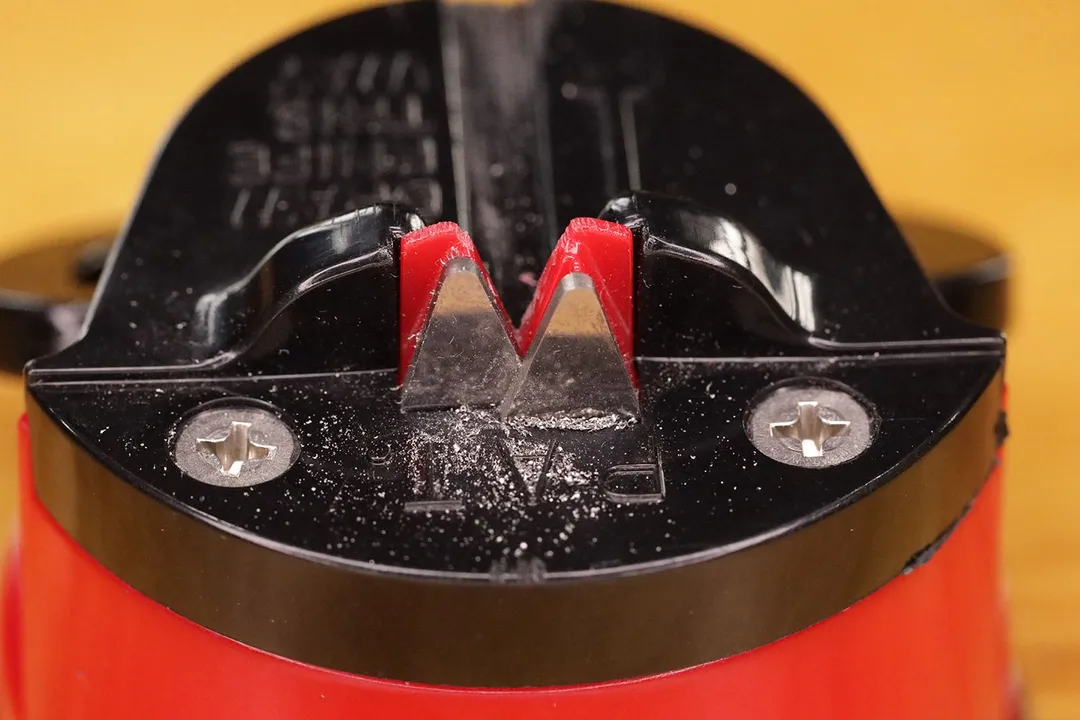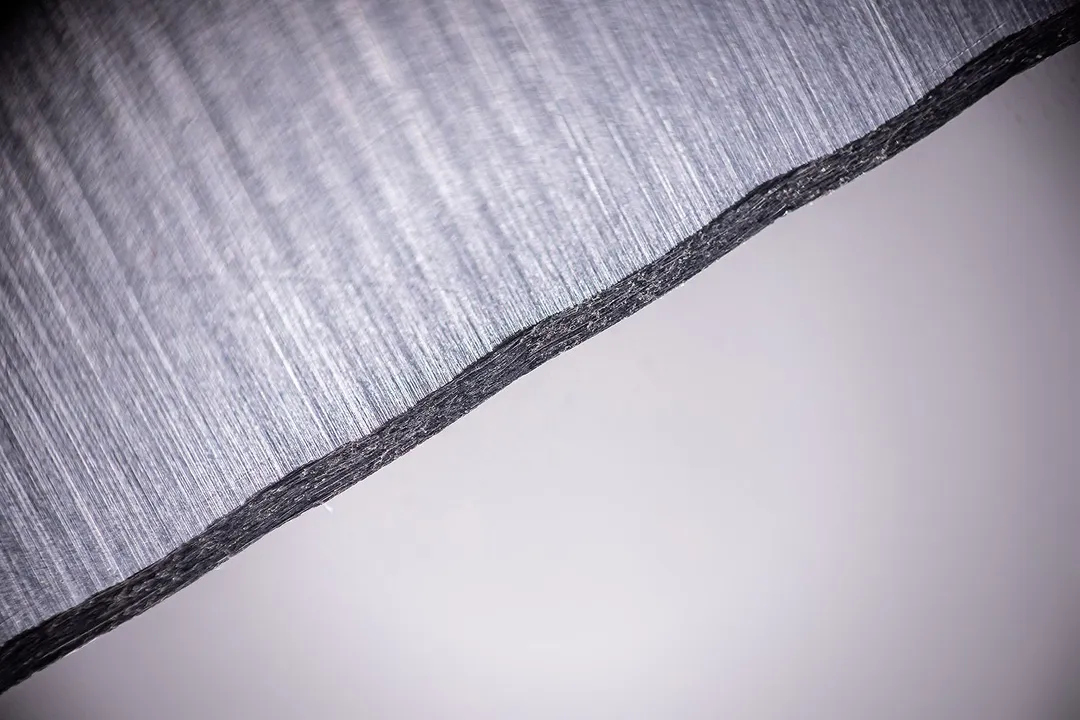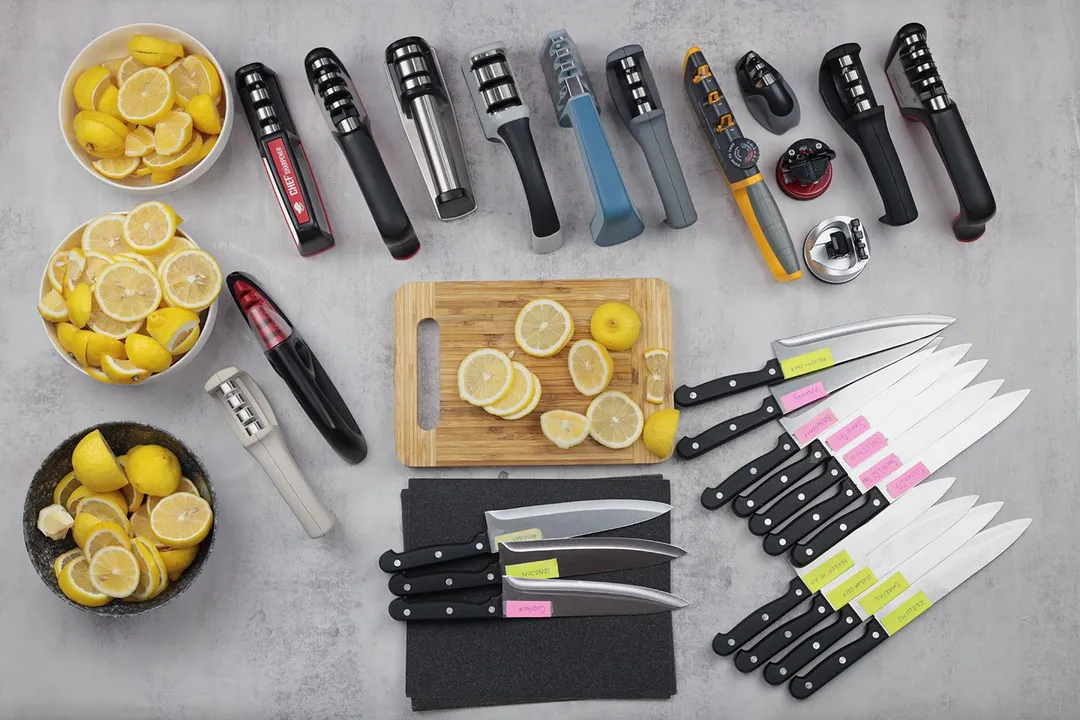Our recommendations are made independently through Research & Testing. We may receive commissions from purchases made via our links.
Material Retention for Manual Knife Sharpeners
We test our sharpeners for the amount of metal they peel off a blade as they sharpen the knife to a serviceable sharpness level.
This test is part of How We Test Manual Knife Sharpeners v1.1
Material retention in this context refers to a sharpener’s ability to preserve the blade’s existing material while sharpening it.
Steel removal is inevitable during sharpening. However, some devices peel off more of the blade than necessary. The upshot is that these devices tend to take less time to achieve sharpness; on the other hand, they also reduce the width of your knife and change its overall shape.
We collect and compare the amount of metal dust and particles produced by each sharpener after one minute of sharpening. The less steel a sharpener shaves off the blade, the better rating it gets.
Why Material Retention Matters
While small blades have their uses, you don’t want to shave your knives into new shapes.




As a blade narrows, its lifespan is reduced. A smaller blade will be less rigid and will have more difficulty chopping thick and dense materials. Scooping food off the cutting board will also be a challenge.
When sharpening with pull-through sharpeners, many people tend to skip the finger guard or heel of the knife. Over time, this creates a wave near the heel, which only becomes more pronounced if your device removes a lot of material. This may affect some cutting tasks, such as the slicing of thick vegetables, since the broader part of the blade will touch the board first, preventing the narrower part from going all the way down.
A decrease in blade weight also changes the center of gravity, and thus the knife’s balance point. If it was originally balanced at the bolster or heel, it will now become handle-heavy. Depending on the task at hand, cutting with the knife may become more challenging.
Material retention makes up 25% of the Performance score.
Why Some Devices Remove Less Steel Than Others
Most pull-through sharpeners feature a sharpening slot with two tungsten carbide blades. These peel off burrs, deformities, and along with them, some of the knife’s useful steel.
Some sharpeners include other abrasives. Three-stage units will usually have a slot with diamond rods preceding the tungsten carbide and one with ceramic rods that follows it. These help remove burrs, straighten the edge, and create a finer, smoother edge. They sharpen the knife while reducing the need to peel off valuable metal. In some cases, however, the stages following the tungsten carbide actually flatten the edge and make the blade duller.
The Test
This test is conducted after the Max Sharpness Test, where we sharpen the test knife for 6 minutes. The knife edge has now conformed to the sharpener and settled in width and angle.
Step 1. We blunt the knife by running it across sandpaper for 45 seconds.
Step 2. We sharpen the knife on the sharpener for 60 seconds. We allocate 15 seconds to the prep slot, if applicable, and the remaining time to the slot that removes the most material from the blade. Polishing or honing slots are skipped.
Step 3. After sharpening, we turn the device upside down, shake it, and use a toothbrush to sweep all the dust and particles onto a piece of printer paper. Our digital scales aren’t precise enough to measure such small amounts, so we go with visual inspection. Photos are then taken for each device.
Scoring
We rate the material retention of the device on a scale of 1 to 10. A score of 1 indicates that the device removes a lot of material from the blade during sharpening. A score of 10 means the device can bring the knife to workable sharpness with minimal removal of steel.
Test Developers
Anh Ngo is a writer with 9 years experience at different media outlets, covering from public news and events to product testing and analysis. At HealthyKitchen101, she works across different departments, communicating closely with its network of writers, editors, and health, tech, and search engine experts to provide a meaningful and pleasant reading experience for visitors.
Lap is Head of the Research, Testing, and Review Team (RTR Team) at HealthyKitchen101.com, where he directs and supervises the testing of kitchen gadgets and appliances.
Nguyen Ntk is a graphic designer, photographer, and videographer whose philosophy centers around respecting and celebrating the beauty of reality. Through his lenses, Nguyen strives to capture the true essence of objects and events, showcasing and highlighting authentic features without distortion or exaggeration.





